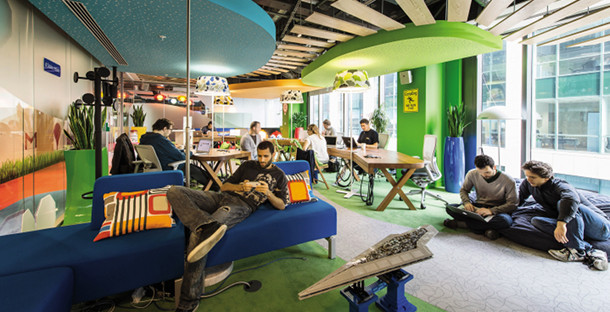The modern office space has come a long way from the standard cubicle farm. Now more than ever, businesses are creating offices that cater to all types of workers — whether they are millennials, Gen Xers, collaborators, introverts or extroverts. With companies such as Instagram, Hutch and Dplus Global creating fun, airy spaces, it’s no wonder that strategic office space design is being recognized for its significant impact on employee productivity. According to a 2017 Capital One Work Environment Survey, 82% of office professionals believe companies need innovative office spaces that can encourage and engage innovation. Yet, as a means of enhancing productivity, workplace design is often overlooked.
If you’re the owner of a business, large or small, looking for ways to increase the output of your employees, the answer may lie in strategic office design. There
What Office Space Factors Affect Employee Performance?
There are various factors that can negatively impact employee performance in the workplace, including the physical design of a space. Aside from disruptions from chatty coworkers and problems with office equipment, the top factors that affect an employee’s productivity, health and well-being include:
- Lighting— Insufficient lighting can lead to eyestrain, fatigue and headaches, especially from florescent lights.
- Temperature and ventilation—Inadequate temperature control and poor ventilation can lead to discomfort and health problems.
- Furniture arrangement— Equipment and furniture that’s too close together can appear cluttered and unorganized, increasing workers’ stress.
How Can You Improve Workspace Design to Boost Productivity?
It’s essential for businesses of any size to take the physical environment of their workers into consideration when designing a quality office space. Here are four design factors that can contribute to employee happiness, health and performance:
- Flexible Layouts
Gone are the days of cookie-cutter offices. With the rise of startups and remote employment, flexible design is an imperative. You can incorporate it by adding standing desks, moveable walls
- Ergonomics
Comfort is vital in any office where workers are seated for extended periods of time. The aim of ergonomics is to improve the conditions of everyday workplace activities, allowing employees to perform their jobs optimally and minimizing potential health risks and musculoskeletal injuries. Incorporating ergonomic seating can help reduce stress on an employee’s neck, back and shoulders, reducing injuries and sick days. Poorly designed workstations can negatively impact a worker’s hands, wrists and back, while implementing sit-stand desks can allow employees to change positions, improve their posture and benefit from a kick of energy.
- Opportunities for Movement
Sitting for long periods of time can lead to neck strain, disc damage and leg disorders, and also increases the risk of diabetes and cardiovascular complications.Promoting movement in the workplace is critical because it improves posture and circulation and allows for collaboration with colleagues. For example, Google encourages movement at its New York headquarters by providing a massive rock-climbing wall where employees can take climbing breaks from their jobs. Outdoor spaces with work areas or gardens also can encourage workers to walk around and stretch.
- Lighting
Banishing dingy lighting and colorless offices can have a significant impact on employee performance. Fluorescent lighting can cause eyestrain and headaches. Incorporating both natural and artificial lighting by including more windows or raising blinds also can help. According to a Future Workplace study o
Go beyond the basics of office furniture and a place to sit and bring out the best in your employees by giving them the freedom to choose how they want to work. It could mean the difference between success and failure for any size business.
Guest Author bio: Tom Smith is

